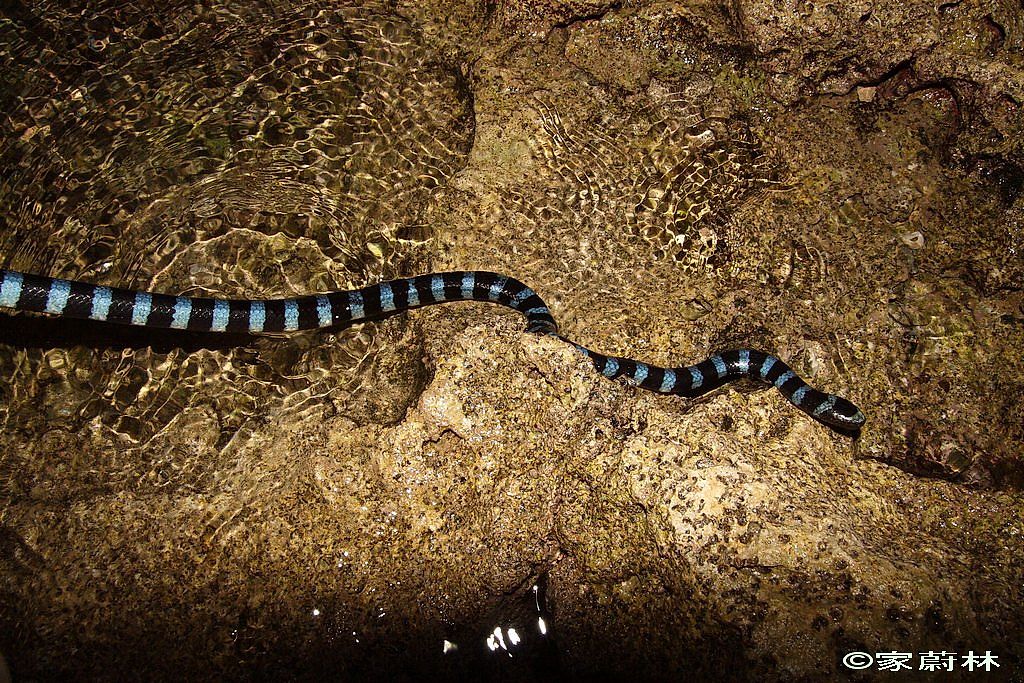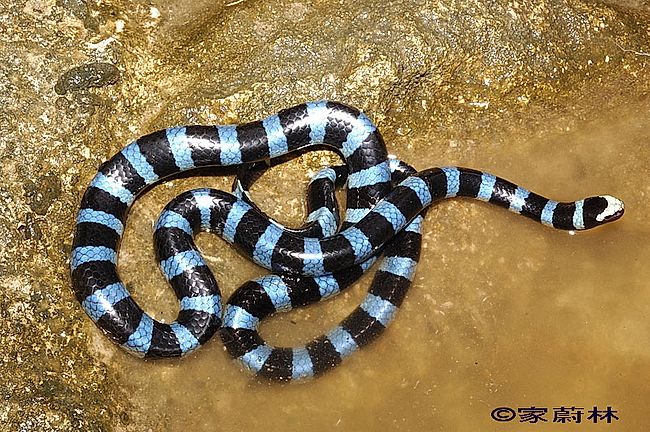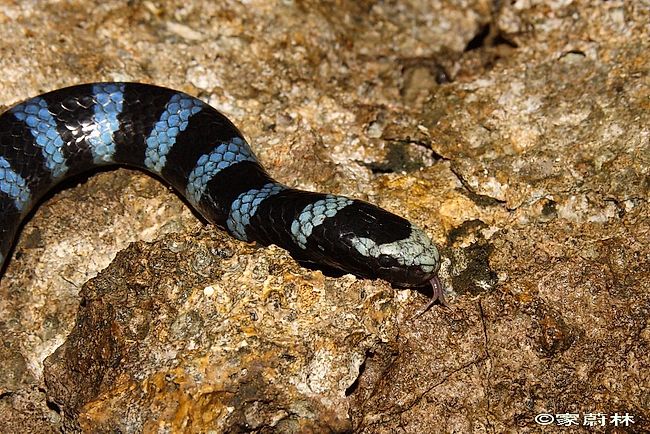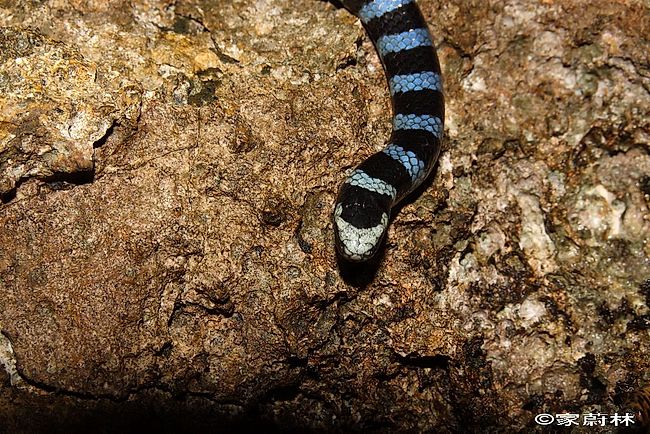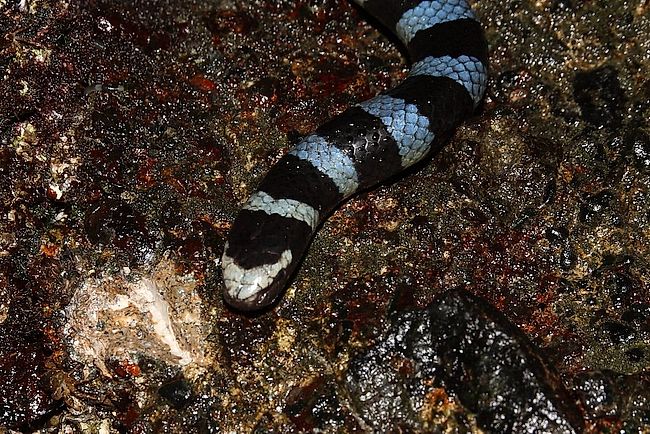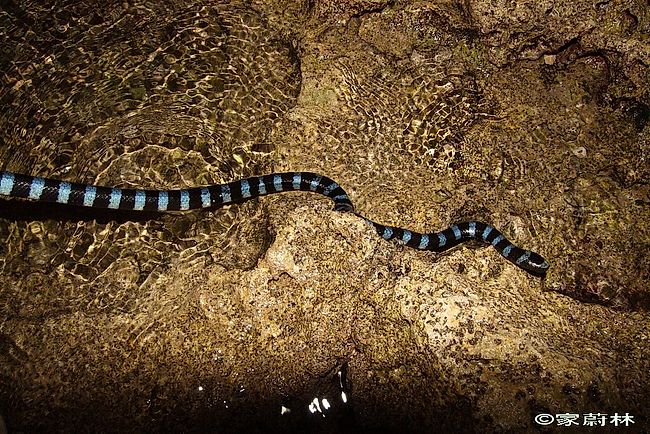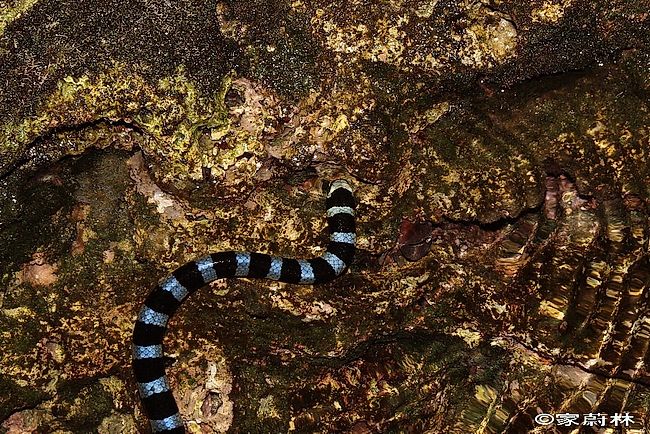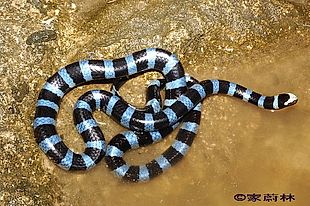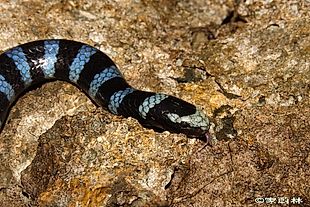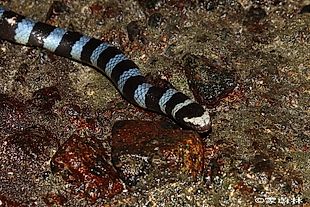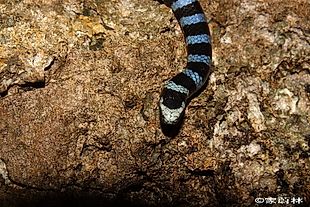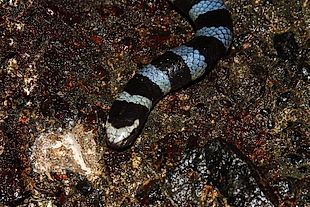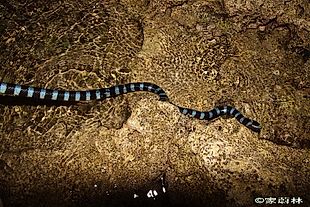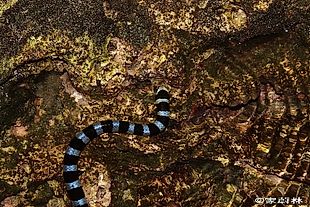Laticauda laticaudata
Common Sea Krait, Blue-Lipped Sea Krait
黑唇清斑海蛇 (hei1chun2qing1ban1hai3she2)
Status: Not protected
HIGHLY VENOMOUS!
Videos
Family
Elapidae, subfamily Hydrophiidae
Max. length
120 cm
Occurrence in Taiwan
Along the coast of eastern Taiwan, especially in Orchid Island, occasionally in Kenting.
Global Distribution
Indian Ocean (East India, Sri Lanka, Myanmar, Malaysia, Indonesia, Melanesia, Polynesia), Solomon Islands, Gulf of Thailand, Philippines, Andaman Islands, Nicobar Islands, Taiwan, China, Bay of Bengal, Peninsular Malaysia, Indoaustralian Archipelago to New Guinea, Japan (Ryukyu Islands), Australia (New South Wales, Queensland), New Zealand, Western Pacific Ocean to Fiji, New Caledonia, Mexico, El Salvador, Nicaragua
Description
Medium-sized snake; total length up to 120 cm. There are 17-21 (about 21 at mid-body) rows of smooth and glossy scales. Head is broad, flattened on top, very slightly triangular, but not distinct from neck; body is moderately stout and slightly compressed laterally, especially in posterior quarter; tail is laterally compressed, sides with vertically elongated scales. The ventrals are medium size and distributed over one-third to more than half the width of body. Eye is medium-sized; iris is dark brown to black and pupil is round, black, indistinct. Tongue is flesh-colored, darkened by scatttered black pigment, and outer half of its fork tips is dirty white. Fangs are medium size, rigid, in anterior part of upper jaw. There are 2 prefrontals and no loreals; the rostral is entire. Upper head is blackish and distinctly marked with a broad band of creamy or light cyan anterior to eyes and extending to sides of head behind eyes. Upper body and tail are cyan to blue while ventral body is dirty white to cream, which are encircled completely by black, prominent bands with clearly defined borders; the black band is similar to the interspaces in width. Ventral head has a prominent broad longitudinal black stripe, extending posteriorly from the mouth to join the black bands of the body; chin and gular shields are dirty white to cream. Anal scale is divided and subcaudals are paired.
Biology & Ecology
This diurnal or nocturnal snake is usually found on coral reefs and rocky areas along the sea coast where the breeding snakes aggregate in summer. It feeds on slender fish, mainly eels. Females produce 2-4 eggs in a clutch. The snout-vent length of smallest mature female and male is 58 and 53 cm, respectively.
Laticauda colubrina is one of world's most venomous snake species. However, due to their inoffensive, docile nature they seldom bite, even in self defense.
L. laticaudata has also been observed to display an interesting way of staying warm, according to the study "Kleptothermy: an additional category of thermoregulation, and a possible example in sea kraits" (Source)
Etymology
Laticauda = from the Latin latus = broad, and cauda, tail, in reference to the wide, flat tail;
laticaudata = see above.
The Chinese name 黑唇青斑海蛇 (hei1chun2qing1ban1hai3she2) means "Black-Lipped (黑唇) White-Striped (青斑) Sea Snake (海蛇)".
Further Info





